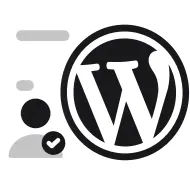In today’s fast-moving digital world, your website is often the first and most important interaction a potential customer has with your business. If that first impression, user experience, or path to purchase is flawed, it doesn’t matter how great your product or service is — you will lose sales.
In this article, drawing on decades of combined experience (imagine 1,000 years!), we’ll dive into
Quick Summary:
- Clearly guide users with strong calls-to-action.
- Ensure your website loads fast and works well on mobile.
- Simplify navigation, build trust, and maintain consistent branding.
- Actively manage your site for continuous performance and sales.
Table of Contents
- Mistake 1: Weak or Unclear Call-to-Action (CTA)
- Why this kills sales
- What good looks like
- How you can fix it today
- Mistake 2: Slow Loading Speeds & Poor Performance
- Why this kills sales
- What good looks like
- How you can fix it today
- Mistake 3: Non-Responsive / Mobile-Unfriendly Design
- Why this kills sales
- What good looks like
- How you can fix it today
- Mistake 4: Cluttered Layout and Confusing Navigation
- Why this kills sales
- What good looks like
- How you can fix it today
- Mistake 5: Inconsistent Branding, Poor Visuals and Trust Signals
- Why this kills sales
- What good looks like
- How you can fix it today
- Mistake 6: Ignoring the User Journey and Conversion Flow
- Why this kills sales
- What good looks like
- Putting it all together: A Design Checklist for Boosting Sales
Mistake 1: Weak or Unclear Call-to-Action (CTA)
Why this kills sales
Your visitor arrives at your website. They read, perhaps browse – but if you do not clearly guide them to the next step, they leave. As one article explains, many sites “lack a prominent call-to-action button that clearly tells website visitors what step to take next.”
In other words, you may have done the hard part of getting traffic — but failing to convert it because people don’t know what to click is a design mistake that silently kills sales.
“If your ‘Sign Up’ button looks like a secondary link, or the menu behaves unpredictably, users won’t find what they came for.”
This matters especially when you’re offering a service (for example via your blog or agency site) and you want someone to “Schedule a call”, “Get a quote”, “Buy now” etc.
What good looks like
- A prominent, visually distinct button or link above the fold (visible without scrolling)
- Clear, outcome-oriented text: e.g., “Get My Free Audit”, “Start My Project”, “Shop Now” instead of vague “Click Here” or “Learn More”
- Placement in more than one location: perhaps once near the top, and again near the bottom of longer content
- One main action per page: avoid multiple competing CTAs that distract the visitor
How you can fix it today
- Audit all your pages: for each, ask “What do I want the user to do next?” Ensure the CTA clearly matches that action.
- Check text of the CTA button/link: is it clear and benefit-driven? Eg. Change “Submit” to “Book My Free Call”.
- Make sure the CTA stands out visually (contrast colour, whitespace, size) and is not buried in clutter.
- Use internal linking within your blog: e.g. if you have an article “How to create marketing agency website” then within that blog you can include a CTA like: “Ready to build your marketing agency’s website? Schedule a consultation today.”
- Test the CTA: using A/B testing or simple observation. Which placement or wording leads to more clicks?
Mistake 2: Slow Loading Speeds & Poor Performance
Why this kills sales
Modern users expect websites to load quickly. If your site takes more than a few seconds, they’re gone. One study shows: pages loading at 2.4 seconds achieved a 1.9 % conversion rate, but those at 5.7+ seconds dropped to 0.6 %.
Another writes: “Speed is the silent killer of conversions. Studies from Google show that if a page takes longer than three seconds to load, more than half of mobile users will abandon it.”
Slow performance not only frustrates users — it reduces trust, increases bounce rate, and thus kills sales before a visitor even sees your offer.
What good looks like
- Page load time under ~2–3 seconds (especially on mobile)
- Optimised images, minimal scripts, clean code
- Use of Content Delivery Network (CDN), browser caching, HTTP/2 etc.
- Minimal large render-blocking resources; little to no delays in interactivity
How you can fix it today
- Run a speed audit: use tools like Google PageSpeed Insights, GTmetrix, Lighthouse. Identify large images, unused CSS/JS, slow server response.
- Compress and properly size images: use WebP/AVIF where supported.
- Reduce number of plugins or scripts on your WordPress site (since you use WordPress).
- Use a high-performance hosting plan or a managed WordPress host.
- Implement caching and CDN.
- Monitor Core Web Vitals (LCP, INP, CLS). Slow performance correlates with lower conversion.
Mistake 3: Non-Responsive / Mobile-Unfriendly Design
Why this kills sales
With the majority of web traffic now coming from mobile devices, failing to provide a mobile-friendly experience is a big mistake. One guide states: “In 2025, having a non-responsive website is a critical business mistake… With over 64 % of all searches now conducted on mobile devices, failing to implement responsive design directly impacts your bottom line.”
Even if your desktop version looks great, if on mobile buttons are too small, menus are broken, or the layout requires zooming/scrolling horizontally — you lose users and thus sales.
What good looks like
- A “mobile-first” design approach: start layout from small screens and scale up
- Touch-friendly buttons/links (min size ~44×44px)
- Fluid grids, flexible images, flexible breakpoints
- No horizontal scrolling, easy reading, clear mobile navigation
- Check that the checkout process (if eCommerce) works smoothly on mobile
How you can fix it today
- Audit your site on multiple devices (real phones/tablets) and screen sizes — not just desktop browser resizes.
- Check mobile navigation: is the menu usable? Is the CTA visible and easy to tap?
- Test your forms/checkout on mobile: are fields too many, is keyboard covering parts, are buttons too small?
- Use responsive wordpress themes or ensure your existing theme is well optimised for mobile.
- Avoid large images or components that force long load times or heavy data usage on mobile.
Mistake 4: Cluttered Layout and Confusing Navigation
Why this kills sales
Even if your design is visually appealing, if visitors can’t find what they need — or if the layout is busy, confusing or distracting — they will leave. As one source states: “Cluttered design with excessive text, images, and ads can overwhelm visitors and make it difficult to find the information they need.”
Another points out: a large site with too many clicks is a mistake — every extra click loses visitors.
What good looks like
- One clear primary goal per page (e.g., get a quote, purchase, subscribe)
- Minimal, intuitive navigation (top-level menu items 3–5)
- Use of whitespace to give breathing room
- Clear visual hierarchy: headings, sub-headings, bullets
- Logical information architecture: users find what they expect to find, quickly
How you can fix it today
- Map out your site’s primary pages and menu items: is the structure clear and shallow (vs deep maze)?
- On each page ask: “What is the one thing I want the user to do?” Remove or de-emphasise anything that distracts from that.
- Use clear labels in menus: avoid creative but confusing terms (e.g., “Discover” instead of “Services”).
- Review page content for clutter: remove excessive graphics, boilerplate text, redundant elements.
- Include a sitemap or footer navigation for deep pages — helps users and search engines alike.
Mistake 5: Inconsistent Branding, Poor Visuals and Trust Signals
Why this kills sales
Your brand image and trust factor matter a great deal. If your site looks inconsistent — varying colours, fonts, image quality — or lacks trust-building signals (testimonials, logos, certifications) then visitors may not feel confident enough to buy. One article states: “Bad stock images kill conversions because they feel generic and untrustworthy.”
Another highlights that inconsistent typography and branding make the site feel unprofessional.
What good looks like
- A consistent brand style: defined palette, typography, iconography, messaging across all pages
- Professional, relevant and high-quality visuals (avoid low-quality stock)
- Trust signals: client logos, testimonials, case studies, secure checkout badges, “As seen in …”
- Clear presentation of your credibility: e.g., “We’ve helped over 500 clients”, “7+ years’ experience in WordPress”
How you can fix it today
- Develop or revisit a brand style guide: brand colours, fonts, image styles, tone of voice.
- Audit your visuals: replace generic stock photos with custom images where possible; ensure all images are sharp, relevant and compressed for web.
- Add trust elements: e.g., highlight satisfied clients, partner logos, sample case studies — e.g., your own on “30 Seconds to 4 Seconds: How We Transformed a Data-Heavy WordPress Site” (link your case study).
- Ensure your site uses HTTPS, and if you accept payments, show secure payment icons.
- Make messaging consistent: hero section, tagline, content should all reinforce your value proposition (for example: “Exclusive WordPress agency managing everything so you can grow”).
Mistake 6: Ignoring the User Journey and Conversion Flow
Why this kills sales
Even if someone lands on your site, browses around, if the path from interest → decision → action is broken, you’ll lose potential customers. One article describes this as “no clear narrative or flow … your site looks good, but there’s no clear journey from problem → solution → action.”
That means your content, design and structure must support the visitor’s logical progression: They arrive with a need, they are shown your value, they are offered proof, and they are given the next step (CTA). If any link in that chain is weak, sales suffer.
What good looks like
- Landing pages and main pages each tell a clear story: Problem → how you solve it → evidence (proof) → action
- Use of headings/subheadings that guide scroll behaviour
- Use of internal links to related content (blog posts, case studies) to deepen trust and keep users engaged
- Minimal friction in the conversion flow: forms simplified, steps clear, distractions minimal
- Use of analytics and user behaviour tracking to identify where visitors drop off
Putting it all together: A Design Checklist for Boosting Sales
Here’s a practical checklist you can use to audit your site (or a client’s site) and catch these top7 design mistakes before they cost sales:
- CTA clarity
- Is the primary action on each page obvious and compelling?
- Is the button/link easy to find and tap (especially on mobile)?
- Page Load & Performance
- Does your home-page load in under ~3 seconds?
- Are images optimised? Are caching/hosting/CDN configured?
- Mobile Usability
- Does the site look and function well on smartphones/tablets?
- Are buttons large enough, menu easy to use, no horizontal scroll?
- Navigation & Layout
- Are menus simple, labels clear, structure shallow?
- Does each page have a clear goal and minimal distractions?
- Branding & Trust
- Is branding consistent (colours/fonts/images)?
- Do you have testimonials, case studies, client logos, secure badges?
- Conversion Flow & Internal Linking
- Does each page take the visitor from problem → value → action?
- Are relevant internal links included (blogs → services, case studies → contact)?
Use this checklist quarterly (or monthly) to ensure your site remains high-performing and sales-friendly.






